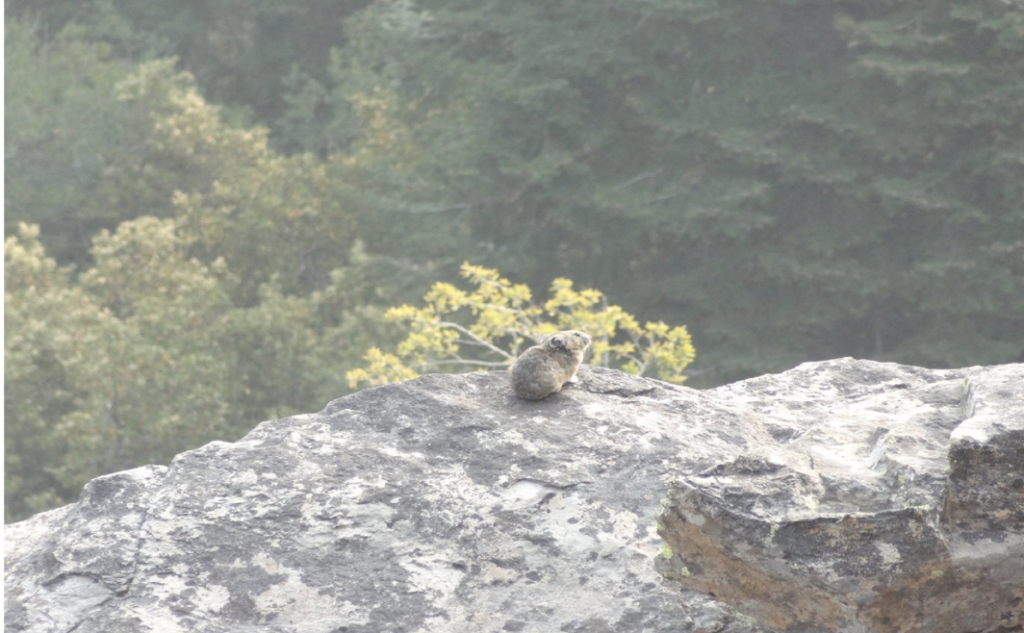Alec Bayarsky and Neil Clayton, both seniors majoring in Environmental Science and Policy, chose to do their capstone on modeling suitable habitat for American Pika. Clayton, current SOU student, explained that these small rabbit-like mammals have been traditionally used as climate change indicator species because they have strict requirements on the type of habitat they can use and their allowance for differences in temperature. However, recent literature shows that might not be the case, so Bayarsky and Clayton wanted to find out.
Digging through literature and gathering data that the park services collected, the pair made suitable habitat maps for Pika in the Cascade-Siskiyou National Monument.
Their goal? To determine if there are American Pika in the monument or not. Using their maps, they went into the field to see if they could find the furry creatures or find signs of them.
“My favorite part of the project is camping out in remote places and getting up before sunrise. You can see the sun come up, listen to the birds wake up, and see 360° views of the Southern Oregon valley and into California,” said Bayarsky. “It’s peaceful and quiet with no one around and if you’re lucky, you’ll hear some Pika, but either way it’s not a bad way to spend your time doing research.”

The Cascade-Siskiyou National Monument is a biologically diverse hotspot and is enjoyed recreationally by many. “As far as locational importance, this is an area that students and faculty are probably enjoying and utilizing and recreating in frequently whether they are aware of that or not,” he, continued.
This monument was the first to be created specifically for biodiversity. If they end up finding Pika in the monument, it could potentially bolster the biodiversity of the monument. “We’re hoping that if we do find them it will strengthen support for the monument and make sure it remains an important part of the valley,” Bayarsky, said.
To hear more about final results or any of their classmate’s capstone projects, the Environmental Science a Policy department will be holding a symposium on May 24. For questions including location disclosure, contact the capstone advisor Jamie Trammell at trammelle@sou.edu.
The featured image was taken by Neil Clayton



